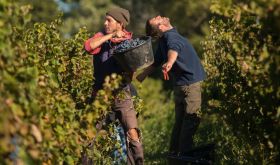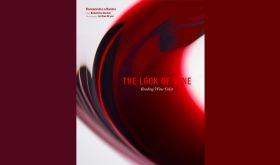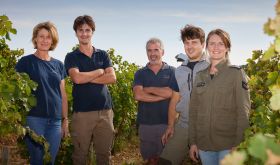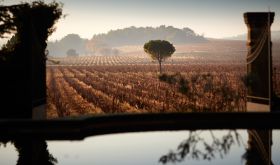It's difficult for non-Americans to get to grips with the amazing phenomenon that is the charity wine auction in the United States.
When the mailing goes out offering the strictly limited number of 2500 dollar tickets to the Napa Valley Wine Auction each year, for example, people FedEx their cheques back immediately, so eager are they not to miss their places at the world's largest wine charity event – five days of hedonism sanctioned by the fact that it has so far raised more than 30 million dollars for local causes.
So when the organising office got a call just before last year's Auction from a new Napa Valley vintner asking if he could bring a friend, he was given, like hundreds of others before him, short shrift. 'Please', wheedled the vintner. 'He's only just heard of the Auction, but he's a recent Silicon Valley retiree and he's got lots of money to spend.' In the end, they let Chase Bailey in, on sufferance and the strict understanding that he had to spend at least 10,000 dollars.
By the end of the Auction he had spent 1.7 million dollars, including the world record sum for a single bottle of wine: 500,000 dollars for a six-litre bottle of the California cult Cabernet Screaming Eagle 1992. B A Adams of Los Angeles, a veteran of 10 Napa Valley Auctions, spent even more, 700,000 dollars, on another lot, a 10-bottle vertical of Harlan, a wine that, like Screaming Eagle, did not exist when the Auction started in 1981.
These were just two of the bidders who boosted the total raised at the 2000 Auction to 9.5 million dollars, almost twice the previous year's total of 5.5 million. (The total for the 2001 Auction in early June fell to 'just' 7.6 million dollars – we are in a recession after all.)
America's charity wine auctions are extraordinary. There are now dozens of them, with Napa Valley being by far the biggest but with a new one in well-heeled Naples, Florida, nipping at its heels. Nashville's L'Été du Vin, one in aid of Atlanta's High Museum and the Central Coast Wine Classic in Avila Beach, California, also raise millions of dollars each year by selling wine.
It's a magnificent game in which there are no losers but the taxman. Donors of wine can write off whatever they estimate is the lot's fair market value, in total, against tax. Successful bidders can write off the entire difference between that fair market value and whatever crazy price they paid for the lot. As the queen of the charity wine auctioneers Ursula Hermacinski says, 'You can pay it to the taxman or you can spend it and have a blast.'
And make no mistake about it, these auctions are designed to be fun. That's fun of a particularly high octane grade at Napa Valley. On the first night the previous Auction's top ten bidders and their partners are treated to a very special dinner by that year's Auction chairman. Others take pot luck with a series of events that might range from bowling old bottles of Pinot Noir at Saintsbury winery to a French Laundry dinner under the stars at Robert and Margrit Mondavi's home.
At the posh Friday night dinner this year, Wolfgang Puck of Spago promised 'an ode to gastronomic nirvana', which sounds almost medical. Saturday is the culmination: the live auction itself. Participants are drip-fed fine food and wine while those all-important numbered paddles are waved frenetically, each one vying with the other to spend more money. 'My tax bill's bigger than your tax bill' seems to be the underlying message.
Ursula H is the perfect auctioneer for this sort of entertainment. Her email address is Gavelgal@aol.com and, boy, does she like to use that gavel as a percussion instrument. She flirts shamelessly with the audience. 'You're out!' is her favourite phrase, turning her back petulantly on someone who refuses to raise his bid (and the bidders are 99 per cent male). 'I'm selling to him just because you're laughing at me,' she'll throw over her shoulder.
While any decent auctioneer can move 150 lots an hour in a straight commercial sale (with mainly absentee bidders), 20 lots an hour is the usual rate for a charity auction, allowing plenty of time for teasing individual bidders. 'I'm basically an entertainer on the podium,' Hermacinski explained. 'The cardinal rules are never shush the crowd – they've paid the money and they're allowed to have fun – and don't remind them it's for charity. They know exactly why they're there.'
She has personally raised millions for charity this way, but has realised only recently, since retiring as Napa Valley auctioneer in fact (Michael Broadbent, Fritz Hatton, David Elswood were all on the podium this year), that her role is actually a minor one. 'It's a shame it was only at the very end I understood just what these guys were doing. If I'd realised earlier that their tax advisors had already told them how much they should spend, I'd have been much more ruthless', she told me wistfully. 'It's almost immaterial what they buy.'
Just before she was due to take up the gavel for the Florida Winefest auction in Sarasota last April, I asked her whether there was a correlation between the size of the bid and the quality of the wine. There was a very long pause before she said carefully, 'There's certainly a correlation with the collectibility of the label. You're talking to probably the most jaded observer of these auctions. I've seen a lot. And yes, absolutely, it almost doesn't matter what's donated, but who donates it. It's not whether it's a double magnum, but whether it comes from one of the cult producers. There's a clear stratification of prices, with the cult wines at the top. Then the new kids on the block, and then the old timers. As for the new kids, it depends on which bidders they've got lined up. It's not very nice sometimes. There can be politicking.'
There's also the irony that places with a nice high ratio of rich donors and bidders like the Napa Valley, Naples and Sarasota, tend to have a relatively low ratio of deserving causes. One or two of other auctions are even devoted to the more highbrow arts. The Napa Valley Auction is careful to direct as many of its millions as possible to the medically 'uninsured and underinsured', particularly, one imagines, the Valley's Mexican labour force whose lifestyle contrasts so markedly with those who flock to the Auction each June.
More information on www.napavintners.com













